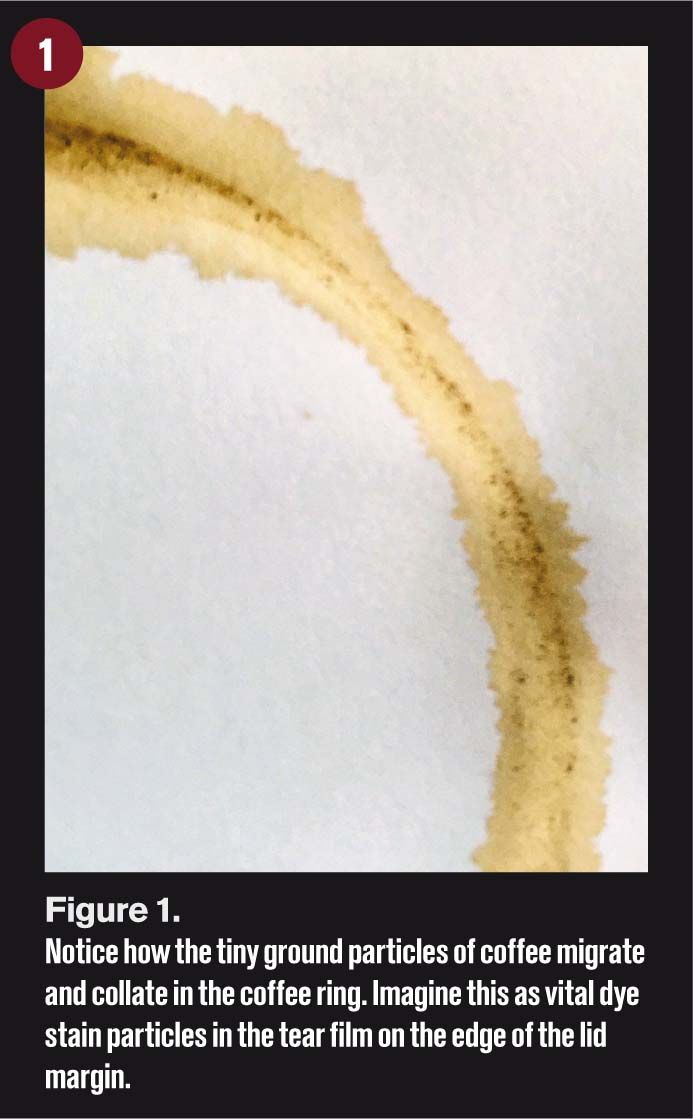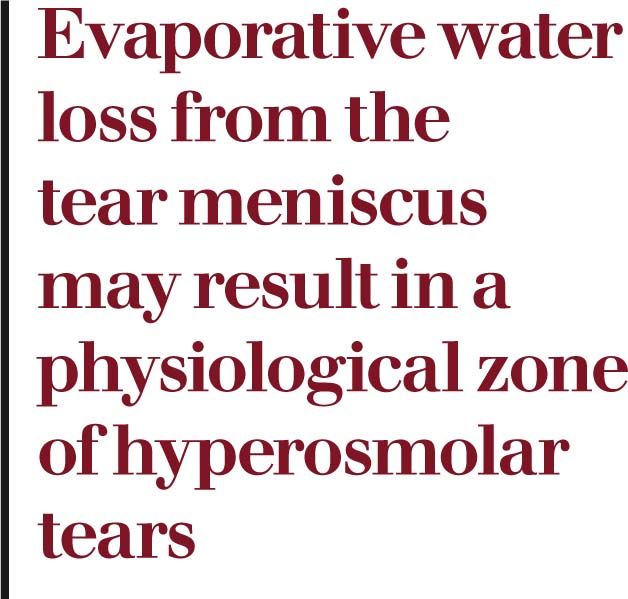What is the coffee ring effect?
I was once characterized as an “information parasite” by a colleague. I must admit that I do troll the Internet, particularly Pub Med, for new, intriguing information especially when its related to one of my two favorite ocular phenomenon that are pseudoexfoliation syndrome and the lid margin.

I was once characterized as an “information parasite” by a colleague. I must admit that I do troll the Internet, particularly Pub Med, for new, intriguing information especially when its related to one of my two favorite ocular phenomenon that are pseudoexfoliation syndrome and the lid margin.
Another non-sequetur confession: I am addicted to coffee.
More dry eye: What's all the craze about demodex?
You can imagine my surprise, when in a Pub Med literature search, I discovered two of my favorite things, coffee and the lid margin, together, in the title of a 2016 article in Medicine. 1
I know that you too find it hard to believe that coffee and the lid margin can be connected, however they certainly are in “‘Coffee Ring Effect’ in Ophthalmology: ‘Anionic Dye Deposition’ Hypothesis Explaining Normal Lid Margin Staining."
More from Dr. Mastrota: How bacteria load creates biofilm
The coffee ring effect
To understand the article, I first had to understand the “coffee ring effect.” In physics, a "coffee ring" is a pattern left by a puddle of particle-laden liquid after it evaporates, as a droplet of coffee would. The edges of a coffee (or water) drop sitting on a table or a piece of paper, for example, are often “pinned” to the surface. This means that when the water evaporates, the drop can’t shrink in circumference but instead flattens out. That flattening motion pushes water, and anything suspended in it, such as coffee particles, to its edges. By the time the drop fully evaporates, most of the particles have reached the edge and are deposited on the surface, making a dark ring.
Next: The coffee ring effect and the Line of Marx
The coffee ring effect and the Line of Marx
At this point I know you are thinking, “What can this evaporation pattern have to do with the lid margin?”
It all boils down to (no pun intended) vital dye staining of the lid margin, specifically the Line of Marx that runs along the inner eyelid. The Line of Marx-para-keratinized cells (an epithelium in which the superficial cells have not lost their nuclei, but have become filled with keratin) that cover the muco-cutaneous junction of the eyelid margin-stains distinctly with vital dyes (especially lissamine green).
More from Dr. Mastrota: Why you're missing the dry eye right in front of you
Characterizing the Marx Line Bron et al suggested that that evaporative water loss from the tear meniscus may result in a physiological zone of hyperosmolar tears.2 Stresses related to this stimulate a high epithelial cell turnover at this site, incomplete epithelial maturation, and a failure to express key molecules which, with the tight junctions between surface epithelial cells, are necessary to seal the ocular surface and prevent penetration of dyes and other molecules into the epithelium. Thus staining happens in this area.

Our “coffee” authors, however, state that the theory above is based on the characteristics of the stained area and do not pay attention to the behavior of dye solution itself on the surface-these authors studied the “coffee ring effect" and its possible applications in explaining the staining of the Marx line.
Next: Dyes and the evaporationg patterns
Dyes and their evaporation patterns
The “coffee” authors evaluated evaporation patterns of rose bengal and fluorescein dyes on different surfaces and the effect of tear meniscus alteration on lid margin staining. They noted that during the evaporation process of dye solutions that almost all of the solute was deposited at the edge of the drop. Furthermore, in the study of lid margin staining, it was observed that tear meniscus alteration during gaze affects staining pattern. According to the observations in this study, it is proposed that Marx line staining occurs as a result of “anionic dye deposition,” that is, properties of the dye itself, due to evaporation.

More from Dr. Mastrota: Understanding the connection between dry eye and eyelashes
Thus, we are left with a question: is the observed Marx line a function of the cell physiology in this area on the lid margin or a property of the vital dyes used to evaluate it?
I ask, what does this mean to us clinically?
Click here to check out more dry eye news and advice
References
1 .Rajabi MT, Sharifzadeh M. “Coffee Ring Effect” in Ophthalmology: “Anionic Dye Deposition” Hypothesis Explaining Normal Lid Margin Staining. Medicine (Baltimore). 2016 Apr;95(14):e3137.
2. Bron AJ, Yokoi N, Gaffney EA, Tiffany JM. A solute gradient in the tear meniscus. I. A hypothesis to explain Marx's line. Ocul Surf. 2011 Apr;9(2):70-91.